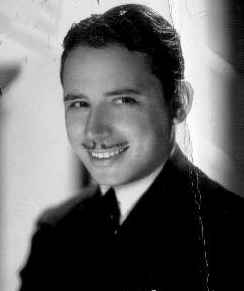Lennie Hayton (Leonard George Hayton)

While playing at the Park Central, Lennie Hayton was heard by Paul Whiteman and immediately engaged by him in April 1928 as second pianist, playing piano and celeste as well as acting as a part-time arranger. Whilst with the Paul Whiteman orchestra, he played with musicians such as Frankie Trumbauer, Bix Beiderbecke, Red Nichols and Joe Venuti. He also became friendly with Bing Crosby, then a member of The Rhythm Boys. In May 1930, Whiteman had to thin down his orchestra as theatre audiences fell due to the economic problems of the day and because of the impact of radio. Hayton and Eddie Lang were amongst the ten members of the band released. Lennie Hayton then joined the Charles Previn Orchestra which had a weekly assignment on radio in the Camel Pleasure Hour. The chance came to re-join Bing Crosby who by late 1931 had enjoyed tremendous success on record, radio and the stage. Starting in April 1932, Crosby embarked on a tour of Paramount-Publix theatres, working across the country to Hollywood where he was to make the film The Big Broadcast. At each location, he continued to broadcast his radio show until he reached the West Coast. Lennie Hayton and Eddie Lang provided the musical support to Crosby on his theatre appearances and on his radio shows. In Chicago in May 1932, Hayton led an orchestra for his first recordings with the singer. “Cabin in the Cotton”, “Love Me Tonight” and “Some of These Days” were all hits. In September 1932, Crosby again went on tour with Hayton accompanying him on piano. In New York on October 25, 1932, Hayton led the orchestra for one of Bing Crosby’s most famous recordings, Brother, Can You Spare a Dime? which went to the top of the charts of the day. In January 1933, Hayton became the musical director for the Chesterfield radio series “Music That Satisfies” which again featured Crosby and ran for 13 weeks.
Lennie Hayton’s involvement with Bing Crosby continued and he was made musical director for the singer’s film Going Hollywood (1933) which was an MGM production. This was to be the start of a major career for Hayton in Hollywood. He continued to work with Crosby on radio (Bing Crosby Entertains) and record for a while but in 1940 he became a musical director for Metro-Goldwyn-Mayer and guided it through its prime years as forerunner of the movie musical. Up until his retirement from the post in 1953, he racked up four Academy Award nominations: for the Judy Garland musicals The Harvey Girls (1946) and The Pirate (1948). Hayton won the Academy Award for music for On the Town with Roger Edens in 1950. Lennie Hayton also arranged the music for Singin’ in the Rain in 1952. Hayton notched up two more nominations—one in 1968 for the unsuccessful Julie Andrews musical Star! and his last the following year for the Barbra Streisand vehicle Hello, Dolly! co-composed with Lionel Newman, which brought him his second and final Oscar. In 1970, Hayton arranged Frank Sinatra’s first attempt at the George Harrison composition Something. However, Sinatra later began using a Nelson Riddle arrangement of the song in concert performances and in 1979 he put the Riddle version on record. Hayton composed “Apple Blossoms” with Joe Venuti, Frankie Trumbauer, and Eddie Lang. His other compositions included “Flying Fingers”, “The Stage is Set”, “Mood Hollywood” with Jimmy Dorsey, and “Midnight Mood”. Hayton also co-arranged the Hoagy Carmichael composition “Stardust” with Artie Shaw, for Shaw’s recording of it in 1940, for Bluebird records. Lennie Hayton died of heart disease while separated from Horne, in Palm Springs, California in 1971.
Born
- February, 14, 1908
- USA
- New York, New York
Died
- April, 24, 1971
- USA
- Palm Springs, California
Cause of Death
- heart disease
Cemetery
- Hollywood Forever Cemetery
- Hollywood, California
- USA

